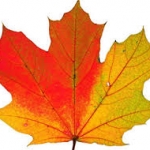Posts Tagged ‘the science behind changing leave color’
Why Do Leaves Change Color?
Autumn is a magical time of year. The cooler weather, the smell of campfire, and the changing leaves. If you have the good fortune to live in the Northeast, the changing foliage can be quite dramatic indeed. But just why do leaves change color? What natural forces are at play here? There are three main…
Read More »
